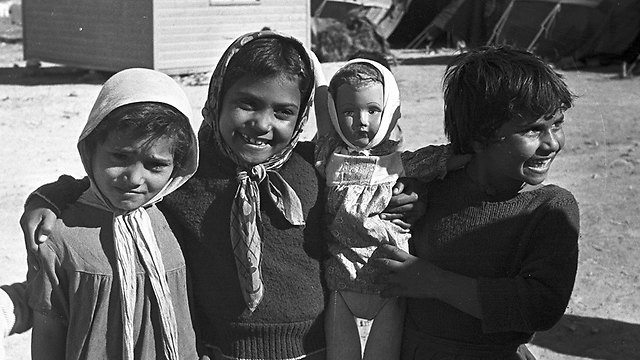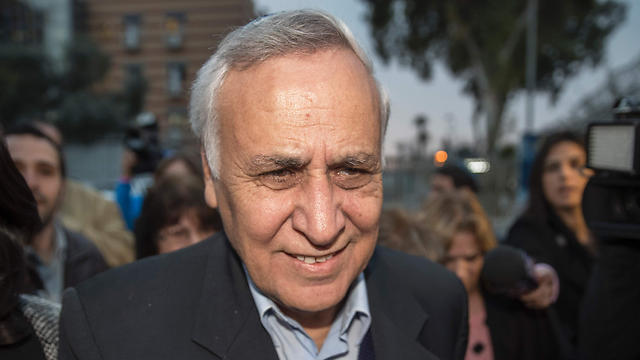
Katsav searching for brother in Yemenite children's papers
After thousands of documents relating to thousands of Yemini and north African children who went missing at the beginning of the Jewish State were revealed Wednesday, Former President Katsav hopes he can find out what happened to his baby brother.
Thousands of personal files relating to the Yemenite children affair – the mysterious disappearance of thousands of Yemenite babies and toddlers between 1948 and 1954 –were declassified by the Israel State Archives on Wednesday, alongside personal files of immigrants from Iran, Iraq and Northern African counties. One of those files describes the story of Zion Katsav, the brother of former president Moshe Katsav.
Moshe Katsav was born in 1945 in the Iranian city of Yazd to Gohar and Shmuel Katsav. When he was one year old the family moved to Tehran, and when he was five they immigrated to Israel and were housed in the Sha’ar Aliyah transit camp near Haifa. From there, they moved to the Kastina transit camp, which went on to become the city of Kiryat Malachi. His brother, Zion-Shalom Katsav, was born there.
In May 1952, at the age of six month, Zion Katsav fell ill and was taken to the Assaf Harofeh Medical Center. The family was then informed that the child had died. When the Shalgi Commission was appointed to investigate the Yemenite children’s affair in the early 1990s, Katsav tried to find out what had happened to his brother, but did not disclose any details. His decision to appeal to the committee, and details of the family’s suspicions, are now revealed in the declassified documents.
While Katsav was the Likud Chairman – at that time part of the opposition – he sent the committee the details regarding his brother. He wrote that his baby brother Zion was born on 12/24/1951, and allegedly died on 5/22/1952. However, Katsav said that the information the family received “raised serious concerns. His death certificate was written in 1964 – 13 years after we were told he had died.”
Katsav further wrote that “the baby was taken to the hospital alone – without being accompanied by the parents – and the next day, they notified that the baby had died. No one in the family was shown a body. The National Health Insurance continued to pay out an allowance for an extra child for 10 years following the announcement that my baby brother had died. It was only after I myself wrote to the National Health Insurance about the death of my brother that they stopped these payments, which were then retroactively deducted.
In a letter to the Shalgi commission, Katsav added that “despite the death certificate, my dead brother still got a letter drafting him into the IDF.”
Another notable surprise for the Katsav family was that “(the brother’s) name was changed from Avner to Zion-Shalom, but the name was only changed in the population registry in 1965.” Zion’s grave was also never located, but the family was told that the grave was somewhere in the Kastina cemetery.
The Shalgi Committee noted that the Kiryat Malachi Religious Council only began registering graves in 1956. However, the Committee said that with the information presented in the death certificate and the explanation to the family that Zion was buried in the cemetery next to the hospital, it is possible to assume that “the baby died in the hospital in Kastina, and it is probably that he was then buried in the Kastina cemetery.”
Moshe Katsav’s younger brother Lior told Ynet that “my brother was born after my brother Moshe and after my sister Shoshana. He got sick and was taken from Kiryat Malachi to Assaf Harofeh Medical Center. We were told he had died a short while later. According to the records, he was allegedly buried in the Kiryat Malachi (Kastina) cemetery. However, in reality, there is no grave. The papers which were released (Wednesday) will reveal the facts of what happened during that time.”
“By the way,” he continued, “the person who looked for and found the relevant documents was my 13-year-old daughter. We still don’t know where (Zion) is buried. My mother – for whom this is still an open wound – is sure he is still alive. We still haven’t told her about the new findings because we don’t want to cause her even more grief.”













